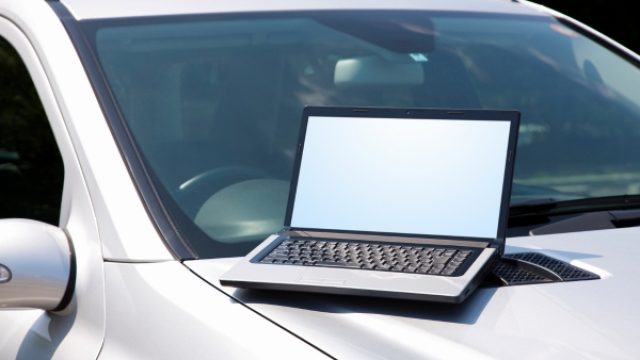Potential Damage to Laptop in Hot Car
Exposing a laptop to high temperatures, such as might occur in a hot car, can result in serious damage to your device. This is because the parts of a laptop – both internal and external – are designed to operate optimally at room temperature. If left in a hot car, especially one with direct sunlight and minimal ventilation, the laptop can suffer in several ways.
Effect of Heat on Laptop Plastic Covering

The external plastic covering of a laptop is vulnerable to high temperatures. It can become hot to the touch and can even begin to melt under extreme heat. This can not only cause the covering to warp and lose its shape, but can lead to the sensitive internal parts of your laptop being exposed and damaged.
Impact on Internal Components like Battery, Hard Disks, LCD panel, and Capacitors
Increased temperatures can also have seriously damaging effects on a laptop’s internal components. Lithium-ion batteries, in particular, are susceptible to overheating. When exposed to temperatures of 86°F and above, these batteries enter into what is referred to as the danger zone – a condition in which their degradation rate increases, causing them to lose capacity at a faster-than-normal rate. Over time, this can greatly reduce your laptop’s battery life.
Hot temperatures can also affect the working efficiency of the laptop’s hard disks, LCD panels, and capacitors. For instance, the extreme heat within a hot car can cause the liquid crystal in the LCD panel to degrade. Similarly, the hard disks and capacitors may overwork and fail due to the heat.
Related article: How To Change Mouse Direction In Dual Monitors
Relevance of Cooling Fan in a Laptop
The significance of the cooling fan in a laptop becomes more evident when the device is exposed to high temperatures. The fan’s purpose is to maintain an optimal working temperature for the laptop by circulating air to cool the internal components. However, in a hot car, the cooling fan might not be able to effectively mitigate the elevated temperature. In addition, the lubrication needed for its operation could evaporate, leading to a shortened lifespan for your laptop.
Measures to Minimize Damage when Leaving Laptop in a Hot Car

In cases where it’s unavoidable to leave your laptop in a hot car, there are some strategic steps you can take to minimize the potential damage.
Use of Cooling Mats
Investing in a cooling mat or an insulated bag for your laptop can help keep the device cool, thereby preventing overheating and minimizing the impact of high temperatures. These mats or bags are designed to dissipate heat and can offer a measure of protection against heat-related damage.
Ensuring Laptop is Shut Down
Before leaving your laptop in your car, ensure it is fully powered down. A powered-down laptop generates less heat and is therefore less likely to overheat. It’s also a good idea to disconnect any connected devices and close all running applications as these can also generate heat. Backing up your data is also advisable as a safeguard against potential data loss.
Safeguarding the Lithium Battery
The lithium-ion battery is especially vulnerable to heat damage. Consider removing the battery from your laptop and storing it in a cooler location. This could be inside your bag or any other location that avoids direct exposure to sunlight and high temperatures.
Optimal Parking Options in High Temperatures
The location where you park your car can significantly affect the internal temperature. Parking in a shaded area is a great way to reduce exposure to direct sunlight and consequently decrease the inside temperature. Another good practice is to leave your laptop in the trunk of the car rather than the cabin. The trunk typically has a lower temperature than the cabin and also keeps your device out of sight, reducing the chances of theft.
Related article: Why Does My Lenovo Laptop Keep Freezing
Steps to Take if Your Laptop Has Been in a Hot Car
If your laptop has been left in a hot car, it’s important to take necessary actions to check and minimize any possible damage before and after using your device. Here are some steps you can take to deal with such a situation:
Delaying the Use of the Device
Upon retrieving your laptop from a hot car, it’s advisable to avoid turning it on immediately. The sudden rapid change in temperature can lead to condensation, causing water damage to your device. Waiting for some time before using your laptop allows the device to return to room temperature, reducing the risk of internal damage.
Visual Checks for Possible Damage
It’s prudent to check the laptop for any signs of visible damage, such as a warped case or any melting. Also, examine the screen for possible issues like discoloration or unusual pixels. Any abnormalities can be an indication of damage and may require professional attention.
Allowing the Laptop to Cool Down Naturally
Give your laptop time to cool down naturally. Rapid cooling methods like refrigeration can cause condensation, which might lead to further damage. Rather, place your laptop in a cooler, shaded area and let it slowly return to normal operating temperature.
Seeking Professional Help if Issues Arise
If your laptop isn’t performing as usual, or you notice anything amiss after it’s been exposed to high temperatures, it’s best to consult with a professional. Taking your laptop to an authorized service center can help diagnose and rectify any potential damage, ensuring the prolonged life and functionality of your device.
Best Practices and Locations for Laptops in Cars
While it’s best to avoid leaving your laptop in a car, particularly a hot one, sometimes it might be unavoidable. The key here is understanding the best practices and preferred locations for laptops in cars, how to maintain optimal temperatures, and simple precautions to preserve laptop performance and longevity.
Ideal Temperature Range for Laptops
Most laptops are designed to function optimally at room temperature conditions. This typically ranges between 50 and 95 degrees Fahrenheit. Even minor deviations from this temperature range may lead to sub-optimal performance, and extreme temperature changes can cause damage.
Preferred Placements of Laptops Inside Cars
The trunk of a car is generally cooler and not exposed to direct sunlight, making it a preferred location for storing a laptop. In addition to being relatively cooler, storing your laptop in the trunk helps prevent theft or accidental damage due to slipping while the car is moving. If the trunk is not an option, the area under the front seat is also suitable as it keeps the device away from direct sunlight.
Special Precautions for Gaming Laptops
Gaming laptops generate more internal heat due to their high-performing components, which are packed into a compact space reducing ventilation. These laptops should not be exposed to temperatures higher than 85 degrees Fahrenheit. Therefore, keep these types of laptops in a cool place, if possible, remove them from the car to avoid heat exposure.
Recommendations for Using Laptops Inside Hot Cars
If you must use your laptop while inside a hot car, ensure there’s sufficient ventilation. You can achieve this by either turning on the air conditioning or opening the windows. Keep in mind high temperatures combined with the heat generated by your laptop, can lead to uncomfortable working conditions and laptop damage. Moreover, increased sweating can cause moisture to drip onto your laptop, and it’s well known that electronics and water do not mix.


